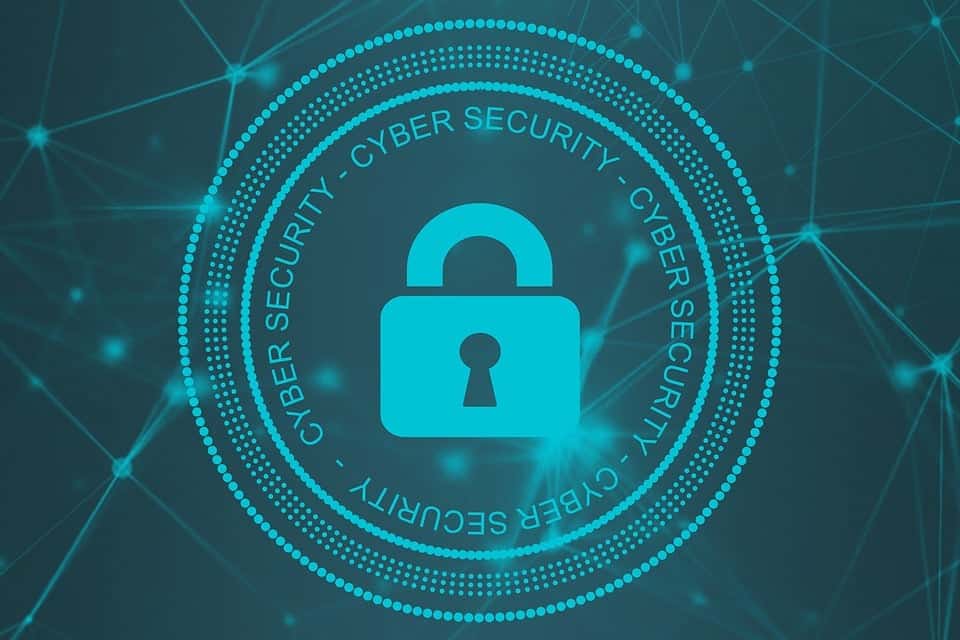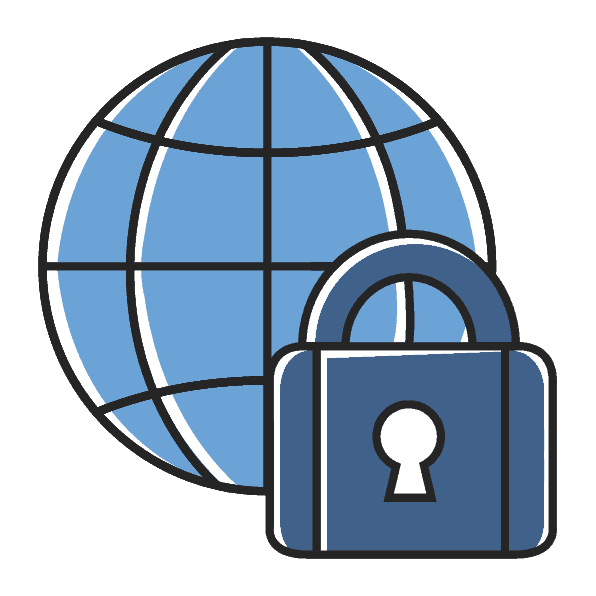The CMMC (Cybersecurity Maturity Model Certification) is a framework developed by the U.S. government (DoD) to improve the information technology security of businesses and organizations. The framework defines different levels of security measures that must be implemented by businesses and organizations to be considered compliant. CMMC compliance is now a requirement for all DoD contractors, including small and medium-sized businesses and organizations.
In this article, we’ll explain what CMMC is, who needs to comply with it, what features to look for in CMMC compliance software, and what it costs.
- RELATED – 9 Things You Should Know About CyberSecurity
- 10 Cybersecurity Tips for Individuals and Students

What is CMMC?
CMMC is an assessment framework of standards that defines the minimum-security controls required to protect sensitive information. The Cybersecurity Maturity Model Certification framework was developed by the Office of the Under Secretary of Defense for Acquisition and Sustainment (OUSD(A&S)).
The latest iteration (CMMC 2.0) was introduced in 2021 and replaced the previous five-level system (in CMMC 1.02) with a new three-level system.
The Three Levels of CMMC 2.0
The three levels are Level 1 (Foundational), Level 2 (Advanced), and Level 3 (Expert). The level of certification needed depends on the specific CMMC assessment requirements.
- Level 1: Foundational
Level 1 requires organizations to implement basic cybersecurity practices and methods, which may be performed in an ad-hoc manner without relying on documented procedures. Self-assessment is allowed for certification (annually), and no assessment of process maturity is performed by C3PAOs.
Level 1 includes 17 safeguarding practices regarding FAR 52.204-21.
Goal: Safeguard Federal Contract Information (FCI)
- Level 2: Advanced
Level 2 requires organizations to document their processes and implement them as described. This level is equivalent to CMMC 1.02 Level 3
An organization that handles critical controlled information must pass a higher-level third-party assessment (C3PAOs) every three years, while those handling non-critical information must undergo a yearly self-assessment.
Level 2 includes 110 practices regarding NIST SP 800-171.
Goal: Basic Protection of Controlled Unclassified Information (CUI)
- Level 3: Expert
Level 3 requires organizations to establish, maintain, and allocate a plan to manage their cyber security strategies. The cybersecurity practices at this level are considered good cyber hygiene practices.
Level 3 includes 110 CUI controls from NIST SP 800-171 + up to 35 controls from NIST SP 800-172. An organization must pass a triennial government-led assessment to remain compliant.
Goal: Enhanced Protection of Controlled Unclassified Information (CUI)
Who Needs CMMC Compliance?
Companies that need to be CMMC compliant are defense contractors and subcontractors that handle Federal Contract Information (FCI) or Controlled Unclassified Information (CUI) for the Department of Defense (DoD) programs.
The level of CMMC compliance required will depend on the type and sensitivity of the information being handled by the company.
Examples:
- Defense contractors and subcontractors that handle Federal Contract Information (FCI) or Controlled Unclassified Information (CUI) related to national security.
- Companies that provide services or products to the Department of Defense (DoD), such as software development, engineering, manufacturing, logistics, and research and development.
- IT service providers, cloud computing service providers, and managed service providers that support DoD operations.
- Companies that participate in the Defense Industrial Base (DIB) and work with sensitive government information, such as aerospace and defense, information technology, engineering, and research and development.
- RELATED – 4 Great Ways to Get Serious on Cybersecurity
- What Is Application Security and Why Is It Important?
How to become CMMC compliant
Businesses can become CMMC-compliant with software by implementing solutions that meet the CMMC requirements and guidelines. Working with a trusted security vendor and consulting with a CMMC Accredited Assessment Organization (C3PAO) can also help ensure that businesses select the right software solutions for their needs.
In any case, the software should include the following key features:
1. Satisfy 27 CMMC 2.0 controls
To achieve CMMC compliance, software must meet the 27 controls outlined in the CMMC 2.0 framework. These controls are designed to ensure that sensitive information is protected and that the organization is taking proactive steps to prevent cyber-attacks and data breaches. Some of the key controls include access control, information protection, system and information integrity, and security management.
2. Ensure CUI is always encrypted
One of the critical features of CMMC-compliant software is the ability to encrypt controlled unclassified information (CUI). Encryption ensures that the information is protected from unauthorized access and provides a secure method for storing and transmitting sensitive data. This is especially important for companies that deal with large amounts of sensitive information, such as personal data and financial information.
3. Achieve file-level protection and logging

Another important feature of CMMC-compliant software is the ability to provide file-level protection and logging. This means that the software can protect individual files and provide a detailed audit trail of who has accessed and modified the file. This level of protection is critical in ensuring that sensitive information is not compromised and that there is a clear record of any actions taken on the file.
4. Instantly revoke access to CUI in any location

In the event of a security breach or other unauthorized access, it is critical that access to sensitive information can be revoked instantly. CMMC-compliant software should provide this capability, allowing organizations to revoke access quickly and easily to CUI in any location. This helps to minimize the risk of data loss and protects sensitive information from unauthorized access.
5. Generate a detailed access audit trail
To ensure that organizations are meeting their obligations under the CMMC framework, it is important that a detailed access audit trail is generated. This information should include details of who has accessed and modified the information, when, and from where. The audit trail provides organizations with a clear record of activity and is critical in helping to detect and prevent security breaches.
6. Secure any application, including CAD, MRP, PDM, and PLM

To achieve CMMC compliance, software must be able to secure a wide range of applications. This includes CAD, MRP, PDM, and PLM applications, which are used by many organizations in a range of industries. A CMMC-compliant software should be able to provide protection for these applications, ensuring that sensitive information is always protected and that there is a clear record of all activity.
Who offers software like that?
AnchorMyData is one of the companies that offers software to support achieving CMMC compliance. This software has features that meet some of the most critical requirements of CMMC 2.0.
You can learn more about CMMC compliance by reading their post, which details what type of companies need support and what to look for in CMMC compliance software.
- RELATED – SASE vs. Zero Trust Security For Enterprises
- Fortinet 2FA: How to Protect Your Network Access Security
Concluding
In conclusion, CMMC compliance is not easy to obtain. Organizations must implement complex solutions to meet the regulations set by the DoD. However, the process to become AND remain compliant can be streamlined by investing in a reliable, robust, and secure software solution like AnchorMyData that can help to comply with the strict and complex CMMC requirements.
I hope this tutorial helped you to know about The Important of CMMC Compliance for Business. If you want to say anything, let us know through the comment sections. If you like this article, please share it and follow WhatVwant on Facebook, Twitter, and YouTube for more Technical tips.
The Importance of CMMC Compliance for Business – FAQs
What is the impact of CMMC?
The CMMC has impacted DIB contractors in several ways, including financially. Prior to the release of CMMC requirements, contractors only had to spend enough to satisfy the DoD.
Why do I need to be in CMMC Compliance?
The Cybersecurity Maturity Model Certification program is a requirement put in place by the Department of Defence (DoD) to ensure that all contractors doing business with the DoD meet certain security protocols.
Who is required to use the CMMC?
CMMC is required for any individual in the DoD supply chain, including contractors who interact exclusively with the Department of Defense and any and all subcontractors.
What is CMMC Compliance?
The Department of Defense’s (DoD) Cybersecurity Maturity Model Certification (CMMC) is an assessment standard designed to ensure that defense contractors are in compliance with current security requirements for protecting sensitive defense information.
What is a CMMC audit?
A CMMC audit is the process of assuming an organization’s cybersecurity maturity. It is also a prerequisite process required to demonstrate an organization’s compliance with the desired CMMC level before being certified.
